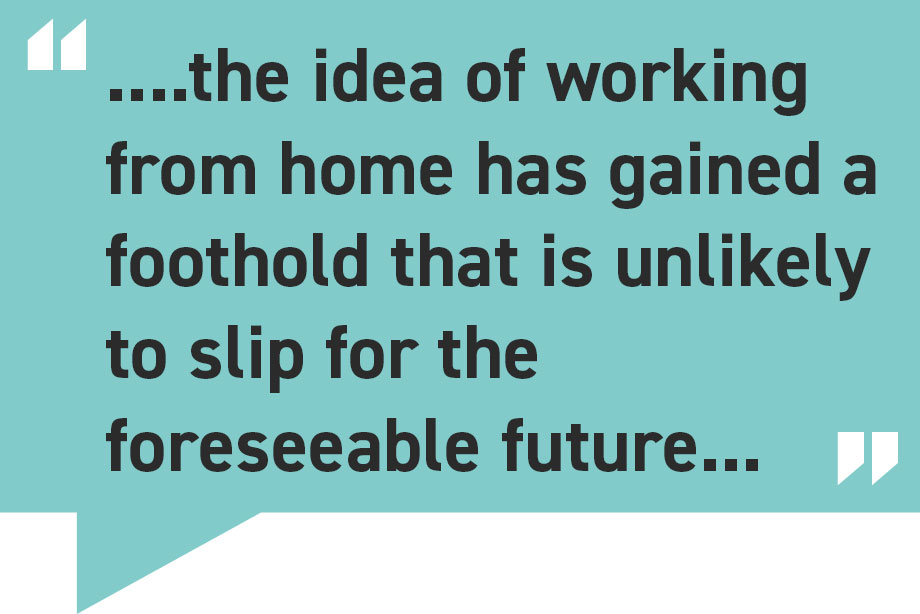Working From Home Tax Tips
by Joe Dunn
With the end of the financial year almost upon us, it is a good time to talk about tax (if ever there is a good time to talk about tax!).
Pandemics and lockdowns have seen many of us working from home for large portions of the last year or two, and there are both pros and cons around this. We are seeing an inexorable return to the office for many people, for at least a portion of their work week, a trend that is very likely to continue and grow. But now that many office workers have experienced working from home, they will be seeking to continue to do so at least for some of their working week.
There is no shortage of information about the benefits of working from home, nor about the desirability of being amongst your work colleagues in the workplace. The income tax benefits of working from home however do not receive as much attention. Whilst these benefits will reduce as people return to the workplace, they do continue for anyone who spends any part of their working week working from home.
The benefit comes in the form of tax deductions available to employees for any increased expenses they incur as a result of working from a home office.
To qualify for the deductions available, you must be working from home to fulfil your employment duties, not just carrying out minimal tasks, such as occasionally checking emails or taking calls; and also incur additional expenses as a result of working from home.
Whether working from home part or full time, if these conditions are met, a tax deduction can be claimed. There are 2 types of expenses that can be claimed, running expenses and occupancy expenses.
Running expenses include energy expenses for heating/cooling and lighting, cleaning, depreciation of office furniture and equipment used for work, and outgoings such as printer supplies and internet and phone expenses.
Occupancy expenses include items such as rent, mortgage interest, rates, insurance premiums and land taxes. Occupancy expenses have more stringent conditions attached to them to be able to claim these expenses. Firstly, they are only available if your employer does not provide you with an alternative place to work. Secondly, there needs to be a dedicated area of your home where you work, which is used almost exclusively for working from home purposes. The other very important thing to note about claiming occupancy expenses, particularly for homeowners is that any claim for mortgage interest may result in capital gains tax being payable upon the sale of the property as you will not be entitled to the full main residence exemption. So before making a claim for this deduction, it would be very wise to seek professional tax advice.
There are a few different ways to claim working from home expenses and as with all claims for deductions, it is imperative that you keep records that show that you incurred the expense. Not to state the obvious, but if you are reimbursed for any expense you incur, or if equipment is provided by your employer, then you are not able to claim deductions for these items. You can only claim for additional costs you incur solely.
The first method to claim was introduced in response to the shutdowns due to Covid – the Shortcut method. This is the last financial year that this method will be available and will not be available from 2022-23 and beyond. It is a very simple way to claim as all you need is to keep a record of your hours working from home and the deduction is allowed at the rate of $0.80 per hour. This covers all work from home expenses including depreciation of equipment and furniture expenses. Even though this is a very simple claim with little required in terms of records being kept, all records will need to be kept if you intend to claim for depreciation of assets in future years. You will also need to be able to show how you calculated the work-related percentage use of the asset and your depreciation calculation in future years.
The second method is the Fixed-Rate method which is similar in the calculation to the Shortcut method. For each hour worked from home, you can claim $0.52, which takes into account energy expenses, cleaning, and the decline in value of home furnishings such as work desks and chairs
Other working from home expenses can be claimed but are not included in the $0.52 per hour rate. These are phone, data and internet expenses; consumables and stationery; and the decline in value of depreciating assets other than furniture – such as computers, phones and laptops.
To be able to support your claim you need to be able to verify the actual hours worked from home, retain receipts etc. to show the amount of expense incurred or value of assets purchased and phone accounts that you can use to identify work-related calls. You also need to maintain a diary that shows your work-related internet use and the percentage of the year that the depreciating assets were used exclusively for work. If your work from home hours are consistent throughout the year, then you can keep the record for a four-week period and use this as representative for the full year. Otherwise, the records need to be maintained for the full year and if your work from home pattern changes, a new record is required.
The final method of claiming a deduction is via the Actual Cost method which is the most detailed method of claiming and has a higher hurdle in terms of supporting the deduction. For this reason, it would typically only be used if the claim using this method is likely to be substantially more than the deduction available using the Fixed-Rate method. The items that can be claimed as deductions are identical to those available under the other methods however the method requires that there is a dedicated work area in the home that is not shared with others. Additionally, any private (i.e. non work purpose) usage needs to be calculated and the claim is reduced by this percentage for each item that has an element of private usage.
The ATO website goes into some detail regarding working from home deductions and also provides links to tools that can be used to assist in calculating the deduction and keeping track of everything throughout the year in preparation for completing your tax return. A very good starting point can be found here where allowable deductions, record keeping requirements and calculation methods are fully detailed:
The return to the workplace is gathering momentum as people recognise the importance and benefits of interactions that can only happen in a common workplace. However, the idea of working from home has gained a foothold that is unlikely to slip for the foreseeable future, and the information provided above is as applicable moving forward as it has been over the past couple of years.
A final disclaimer – the information above is very general in nature and is not intended as specific advice for any particular set of circumstances. The links provided should be consulted and applied to your own circumstances and if unclear about anything, professional advice should be sort from a qualified tax specialist.



